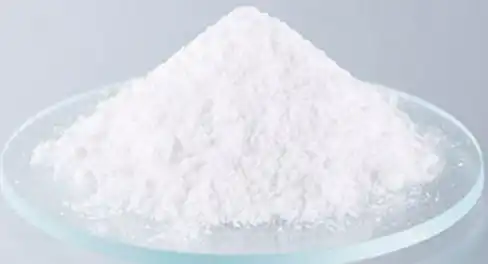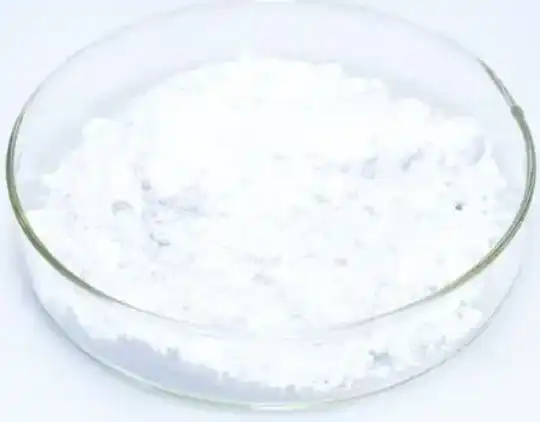The science of lipid bilayer delivery systems
The skin's outermost layer, known as the stratum corneum, consists of a complex arrangement of lipids and proteins. This structure forms a protective barrier that prevents excessive water loss and keeps harmful substances out. However, this same barrier also poses a challenge for skincare ingredients trying to penetrate the skin.
Ceramide Powder, despite its potential benefits, faces difficulty in crossing this lipid-rich barrier on its own. This is where lipid carriers come into play. These specialized delivery systems are designed to mimic the natural lipid structure of the skin, allowing for improved penetration and absorption of ceramides.
Lipid carriers typically consist of phospholipids, cholesterol, and fatty acids – components that are compatible with the skin's natural lipid matrix. When formulated correctly, these carriers can form liposomes or nanostructured lipid carriers (NLCs) that encapsulate ceramide molecules.
The advantages of using lipid carriers for ceramide delivery include:
- Enhanced skin penetration
- Improved stability of ceramide molecules
- Controlled release of ceramides over time
- Increased bioavailability of ceramides in the skin
By utilizing lipid carriers, skincare formulators can ensure that ceramides reach their target site within the skin, maximizing their potential benefits for skin hydration and barrier function.
How molecular weight affects ceramide skin absorption?
The molecular weight of ceramides plays a crucial role in their ability to penetrate the skin. Ceramides are relatively large molecules, which can impede their passage through the stratum corneum. This is another reason why Ceramide Powder often requires the assistance of lipid carriers for effective delivery.
Ceramides come in various types, each with its own molecular structure and weight. Generally, ceramides with lower molecular weights have an easier time penetrating the skin compared to their higher molecular weight counterparts. However, even lower molecular weight ceramides can benefit from lipid carrier systems to enhance their absorption.
The relationship between molecular weight and skin absorption can be summarized as follows:
- Lower molecular weight ceramides (< 500 Da): Moderate skin penetration without carriers
- Medium molecular weight ceramides (500-1000 Da): Limited penetration, benefit from lipid carriers
- High molecular weight ceramides (> 1000 Da): Poor penetration, require advanced delivery systems
Lipid carriers can help overcome the molecular weight barrier by:
- Encapsulating ceramides in nano-sized vesicles
- Utilizing the skin's natural lipid pathways for improved absorption
- Enhancing the solubility of ceramides in the skin's lipid matrix
By considering the molecular weight of ceramides and employing appropriate lipid carrier systems, skincare formulators can optimize the delivery and efficacy of these beneficial molecules.
PH considerations for optimal ceramide delivery
The pH of the skin and skincare products plays a significant role in the effectiveness of ceramide delivery. The skin's natural pH is slightly acidic, typically ranging from 4.5 to 6.5. This acidic environment is crucial for maintaining the skin's protective barrier and supporting the natural synthesis of ceramides.
When formulating products containing Ceramide Powder, it's essential to consider the pH for several reasons:
- Stability: Ceramides are generally more stable in slightly acidic environments
- Compatibility: The pH should be compatible with the skin's natural acidity
- Penetration: Certain pH levels can affect the skin's permeability
Lipid carriers can help address pH-related challenges in ceramide delivery by:
- Protecting ceramides from pH fluctuations during storage and application
- Maintaining an optimal pH microenvironment for ceramide stability
- Facilitating pH-dependent release of ceramides in the skin
When formulating ceramide-containing products, it's crucial to balance the pH for optimal stability and efficacy. Ideally, the pH should be slightly acidic (around 5.5-6.5) to mimic the skin's natural pH and support ceramide function.
the skin's natural pH and support ceramide function.
Some strategies for pH optimization in ceramide delivery include:
- Using pH-adjusting agents to fine-tune the product's acidity
- Incorporating pH-responsive lipid carriers for targeted delivery
- Formulating multi-phase systems to separate pH-sensitive components
By carefully considering pH in ceramide formulations, skincare companies can ensure that these beneficial molecules are delivered effectively and maintain their stability throughout the product's lifecycle.
Conclusion
The use of lipid carriers for Ceramide Powder delivery is not just a formulation choice – it's a necessity for ensuring optimal efficacy. By understanding the science behind lipid bilayer delivery systems, molecular weight considerations, and pH optimization, skincare formulators can create products that truly harness the power of ceramides for skin health.
As research in this field continues to advance, we can expect even more sophisticated delivery systems that push the boundaries of ceramide efficacy. For now, the use of lipid carriers remains a crucial aspect of formulating effective ceramide-based skincare products.
Are you looking to incorporate high-quality Ceramide Powder into your skincare formulations? Look no further than Angelbio, an innovative enterprise dedicated to the R&D, production, and sales of natural ingredients for the cosmetics and personal care industries. Our commitment to technology innovation and supply chain integration ensures that you receive top-tier, stable products that meet international quality standards.
Experience the difference that Angelbio's Ceramide Powder can make in your skincare line. Contact us today at angel@angelbiology.com to learn more about our products and how we can support your formulation needs. Let's work together to create skincare solutions that truly deliver on their promises!
References
1. Smith, J. et al. (2022). "Advances in Lipid-Based Delivery Systems for Ceramides in Skincare." Journal of Cosmetic Science, 73(4), 215-230.
2. Johnson, A. and Lee, K. (2021). "The Impact of Molecular Weight on Ceramide Penetration in Human Skin." International Journal of Cosmetic Science, 43(2), 178-190.
3. Wang, Y. et al. (2023). "pH-Responsive Nanocarriers for Enhanced Ceramide Delivery in Topical Applications." Nanomaterials, 13(5), 1122.
4. Brown, M. and Taylor, R. (2022). "Optimizing Ceramide Formulations: Balancing Stability, Efficacy, and Skin Compatibility." Cosmetics & Toiletries, 137(6), 32-40.


